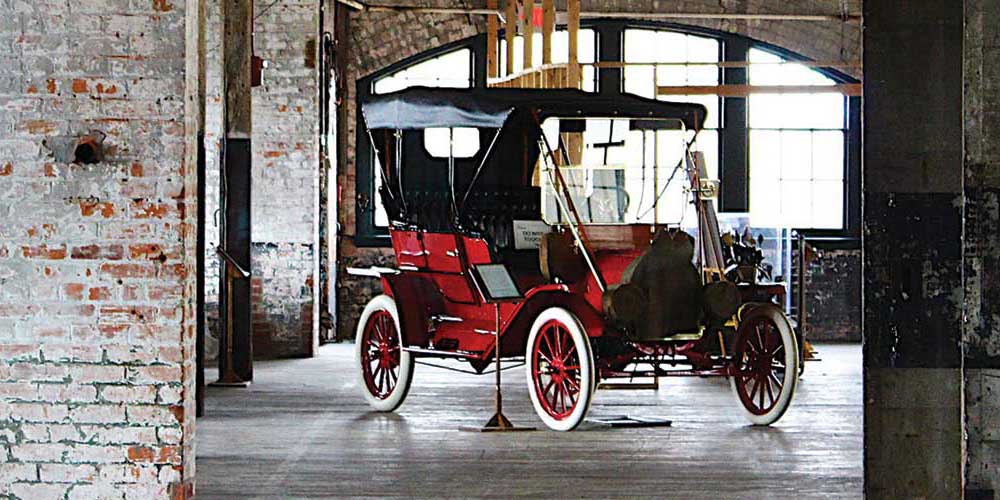By Robert Tate, Automotive Historian and Researcher
Images Courtesy of the National Automotive History Collection, Robert Tate's collection and Chrysler Corporation
Published 11.14.2018
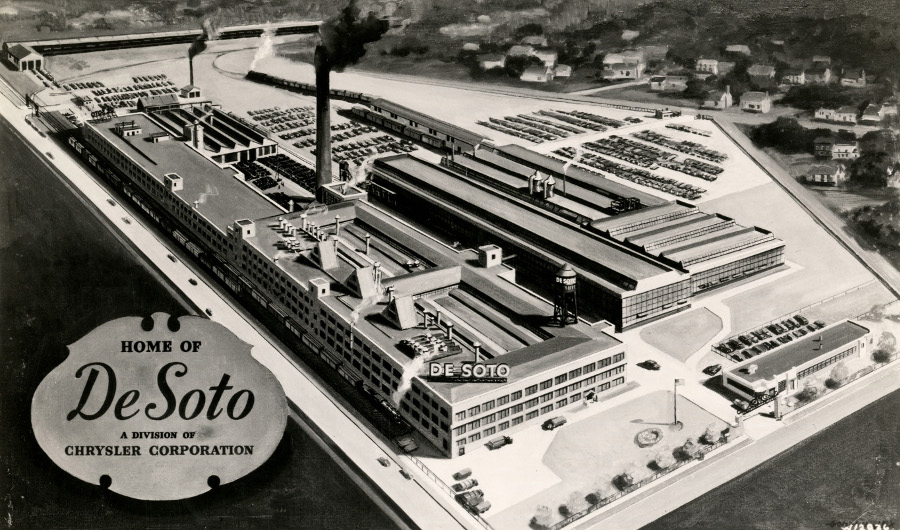 The DeSoto factory (National Automotive Heritage Collection)
The DeSoto factory (National Automotive Heritage Collection)
The first DeSoto automobile was introduced to the public on August 6, 1928. The vehicle sold very well during its first twelve months. The car was named after the Spanish explorer Hernando DeSoto who discovered the Mississippi River in 1541. Walter P. Chrysler had announced the new addition to the Chrysler family in the May 6, 1928 edition of the Detroit Free Press.
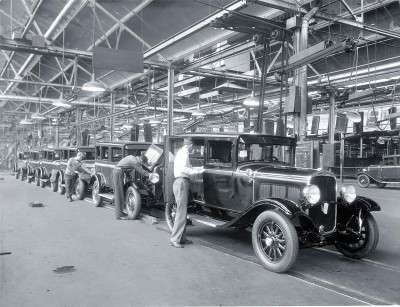 1929 DeSoto assembly line (Chrysler Corporation)
1929 DeSoto assembly line (Chrysler Corporation)
In 1929, J.E. Fields, a Chrysler vice president of sales, was named president of the DeSoto Division. The 1929 DeSoto model shared bodies, fenders, hoods and many other components with Plymouth. It was called the Faeton which was a five-passenger model and a great looking car.
Although the Great Depression was on the minds of many Americans, De Soto continued to move ahead and manufacture many great looking automobiles. During the 1930s, a revolutionary new design called the Chrysler Airflow was introduced.
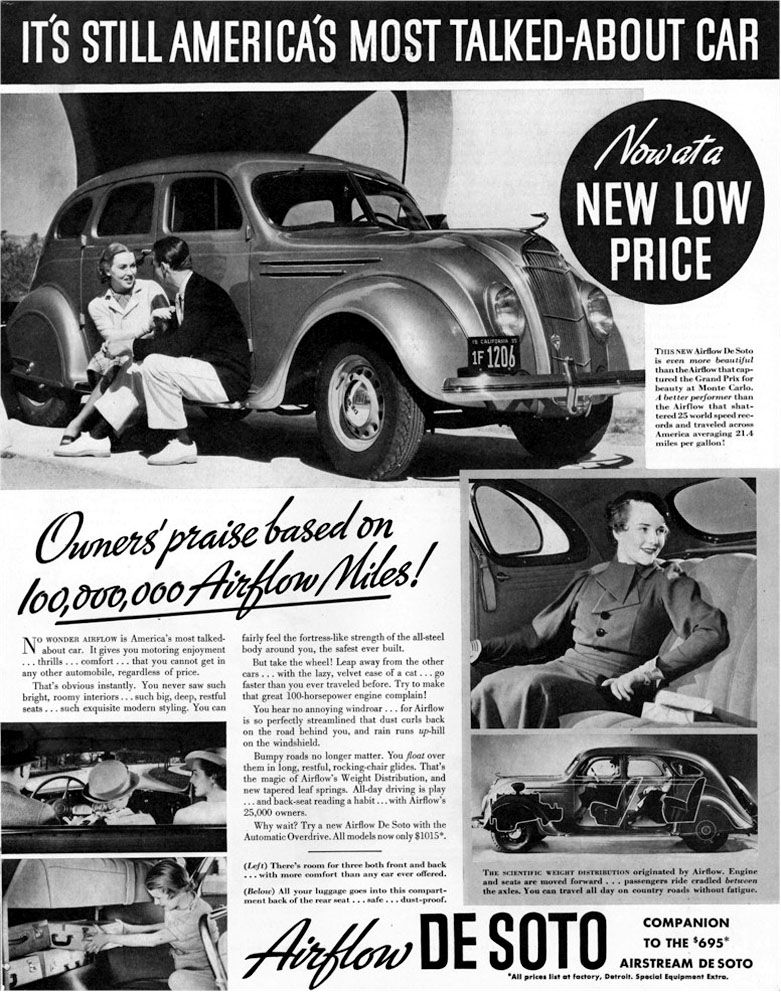 1930 DeSoto Airflow ad (Robert Tate Collection/Chrysler Corporation)
1930 DeSoto Airflow ad (Robert Tate Collection/Chrysler Corporation)
The 1934 DeSoto Airflow was often shown with streamlined trains to show off that futuristic look. The model was first called the two-door, five-passenger coupe, but later was advertised as the three-passenger coupe. The DeSoto Airflow models were priced at $995. The Airflow coupe design was a true fastback model with a different rear end. Automotive historians have said that it was the late Ray Dietrich, who was responsible for the Airflow design. The Airflow III model S-2 was the last model that would be available for DeSoto dealers in 1936 since Chrysler discontinued the Airflow due to poor sales.
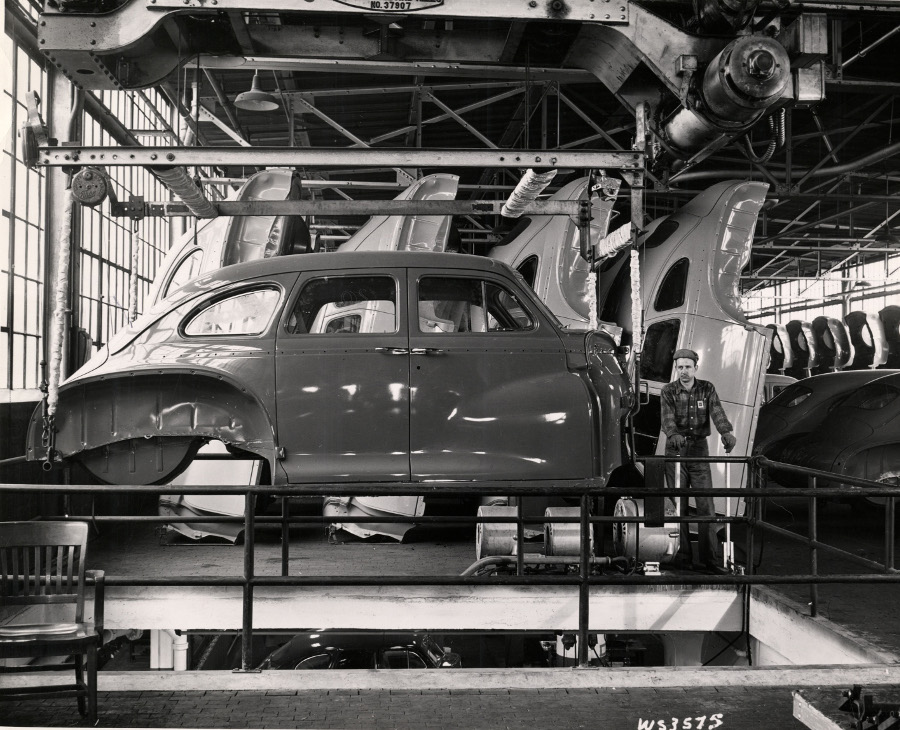 Early 1940s DeSoto bodies being manufactured (National Automotive History Collection)
Early 1940s DeSoto bodies being manufactured (National Automotive History Collection)
In 1942, for the last models available before the war, DeSoto offered a great looking model with concealed headlamps called “Airfoil” lights, a feature many customers admired.
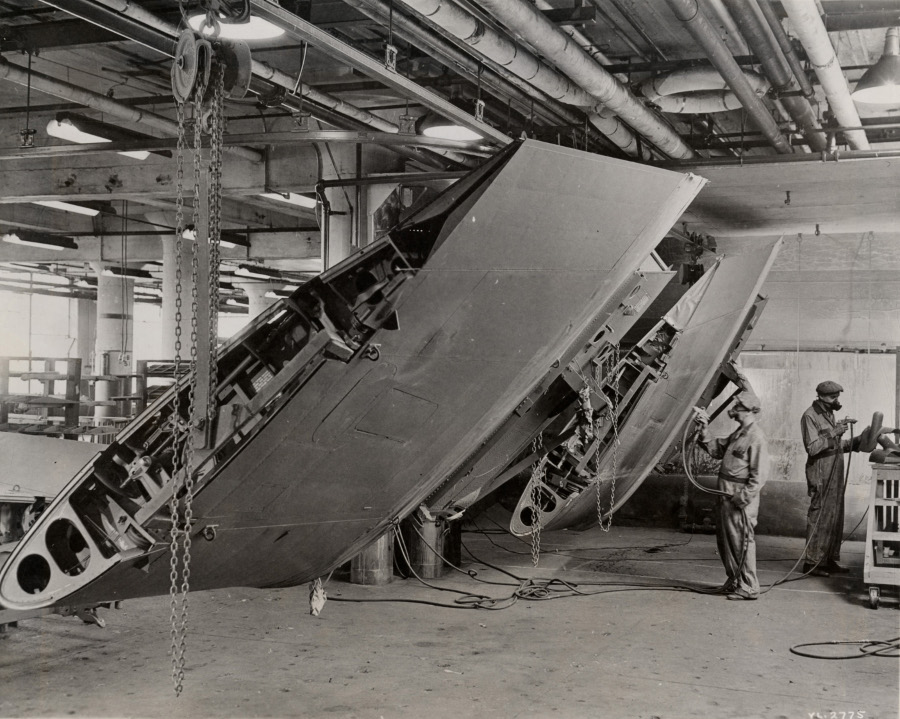 Spraying airplane wings during World War II at the DeSoto factory (National Automotive Heritage Collection)
Spraying airplane wings during World War II at the DeSoto factory (National Automotive Heritage Collection)
In the 1940s, DeSoto shifted production to wartime efforts in their manufacturing plants. By January of 1943, the Chrysler Corporation was employing 145,000 men and women for 30 major military contracts. In the the image below, you can see factory workers spraying paint on wing sections of bomber planes at Chrysler Corporation's DeSoto assembly plant.
After the war, DeSoto offered many new and great designs for the consumer market, due to the iconic work of designer Virgil Exner. The 1950s featured tail fins and lots of chrome for the American consumer market. It was an exciting time to be an automotive designer.
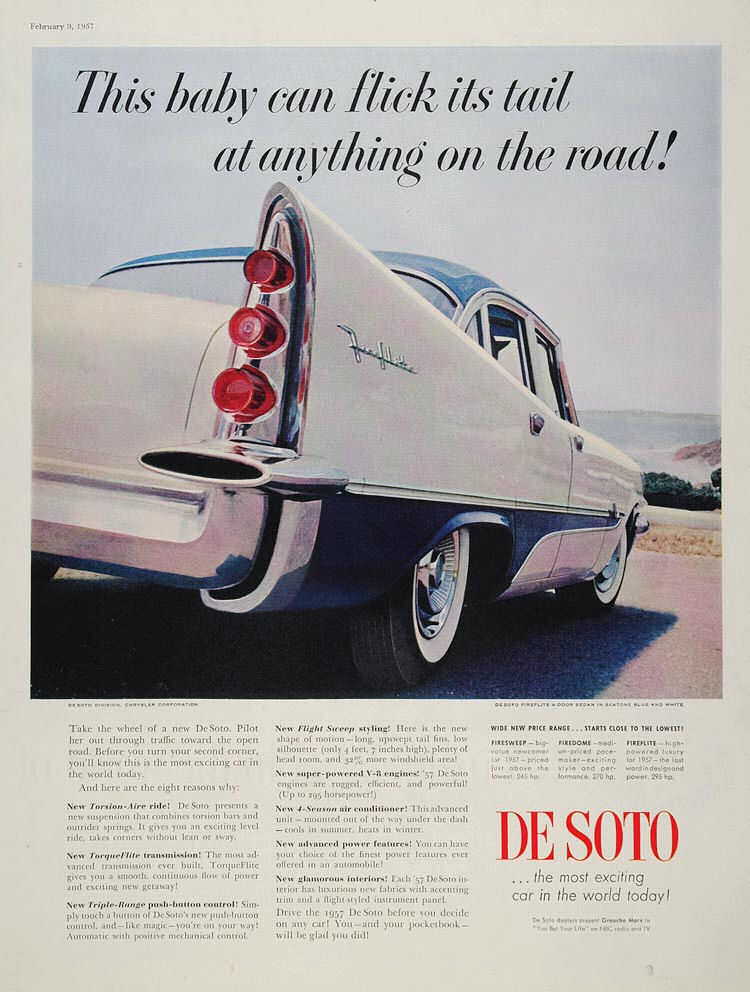 1957 DeSoto Ad (Robert Tate Collection/Chrysler Corporation)
1957 DeSoto Ad (Robert Tate Collection/Chrysler Corporation)
The new 1955 DeSoto models were designed under the direction of Exner. Don Butler, the author of “The Plymouth and De Soto Story,” said, “This was a year of exceptional prosperity which brought the industry out of the mild sag of 1954.” The new line was introduced as “The Forward Look,” and many customers enjoyed their styling. The 1957 DeSoto models were also very exciting and beautiful cars. Throughout the model years 1955-1959, DeSoto enjoyed strong sales.
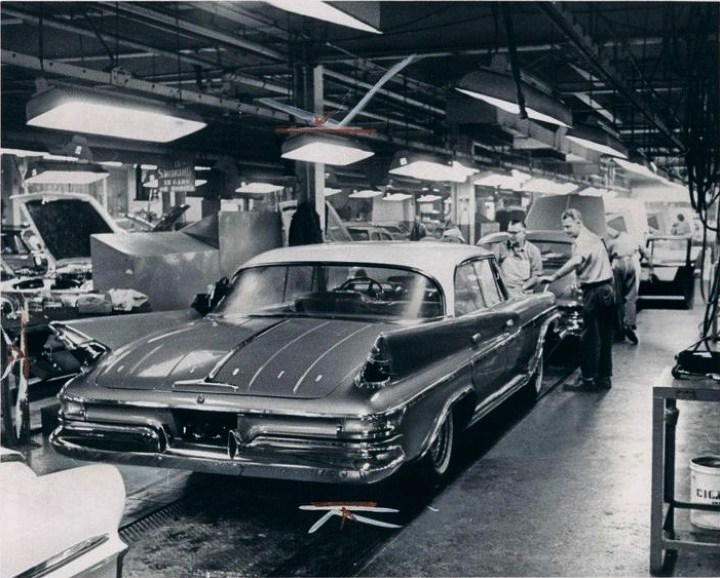 Last 1961 DeSoto assembly line (Chrysler Corporation)
Last 1961 DeSoto assembly line (Chrysler Corporation)
In 1960, the big news from the Chrysler Corporation was the Valiant compact car. DeSoto was beginning to struggle for survival and only two series were offered for 1960. 1961 would be the last model year for manufacturing the DeSoto nameplate. On November 30, 1960, DeSoto dealers were notified by telegram that Chrysler was ending DeSoto production in the United States.
DeSoto had been in business for more than 32 years, however, it has left historians with a rich legacy and automotive history that many will always remember. For more information on the history of DeSoto, please contact the National De Soto Club at www.desoto.org.
Bibliography
Butler, Don. “The Plymouth and De Soto Story.” Crestline Publishing, 1978.
The Auto Editors of Consumer Guide. “De Soto 1929-1933.”
Lamm, Michael & Holls, Dave. “A Century of Automotive Style 100 Years of American Car Design.” 1996-97.


